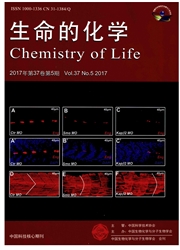

 中文摘要:
中文摘要:
生物大分子(如蛋白质等)在生物体内行使功能必须要保证其立体结构的正确性。作为研究大分子高级结构的主要手段,结晶技术结合X-射线衍射技术、核磁共振技术以及电镜技术被普遍应用于高级结构的数据分析。随着这些技术的进一步完善,目前已经能完成蛋白质与配体的共结晶。遗传信息从最原始的DNA或RNA传递到以蛋白质的形式呈现功能的过程是由众多酶或蛋白质复合体催化的多步骤进程,解析其中重要元件的空间结构推动了对这些酶反应机理的深入研究。主要阐述结晶技术在遗传信息传递过程中关键酶或蛋白质复合体的研究中的应用。
 英文摘要:
英文摘要:
For macromolecular compounds (e.g. protein), it is necessary to tbrm correct three-dimensional structure for performing functions in vivo. As the primary tool, crystallization coupled with X-ray diffraction, NMR and electron microscopy is widely utilized in data analysis of macromolecular three-dimensional structures. Along with the improvement of these technologies, co-crystallization of protein-ligand complexes has been accomplished. It's a multi-step process for genetic information transduction from DNA (or RNA) to protein, which was catalyzed by enzymes or protein complexes. The solved structures of these enzymes have been promoting intensive study in this field. The application of crystallization technology in structure-based functional property analysis of the main enzymes or protein complexes which play roles during the genetic information transduction will be expounded.
 同期刊论文项目
同期刊论文项目
 同项目期刊论文
同项目期刊论文
 期刊信息
期刊信息
